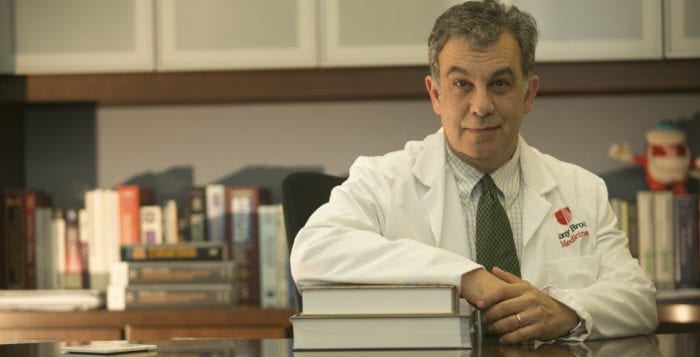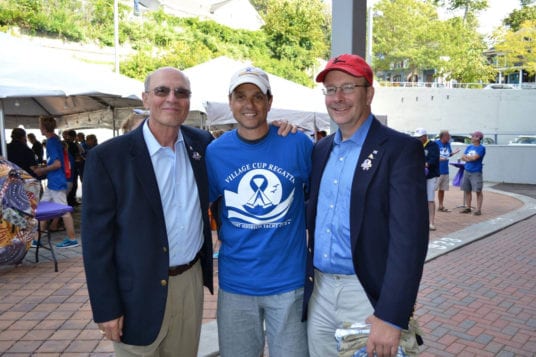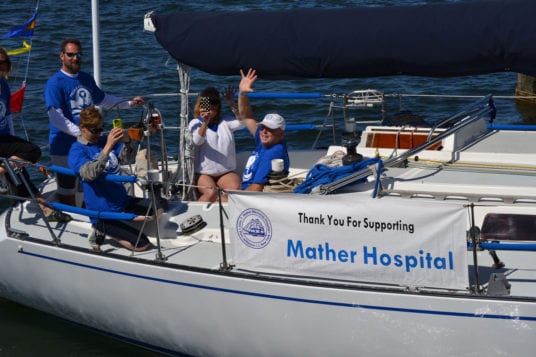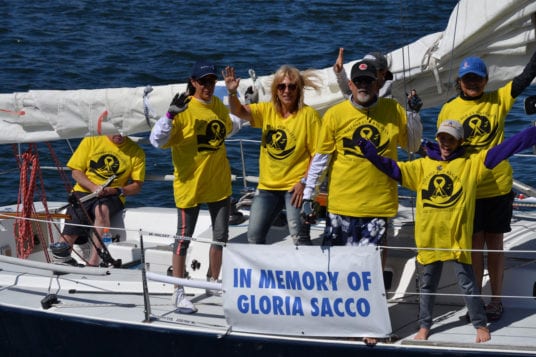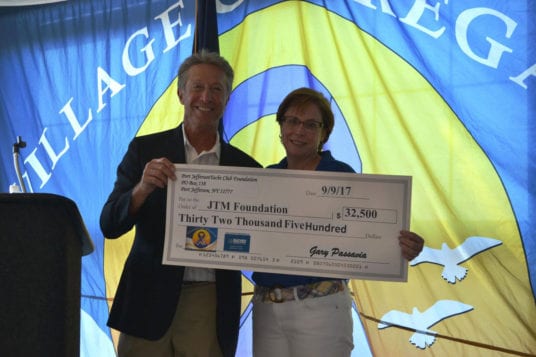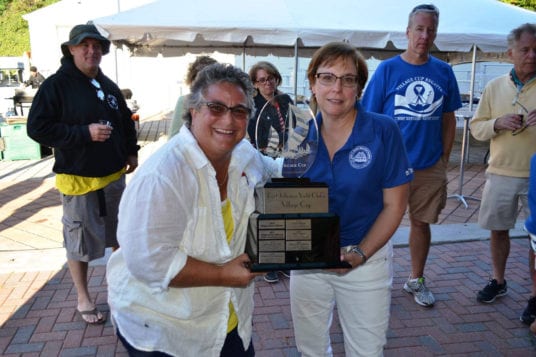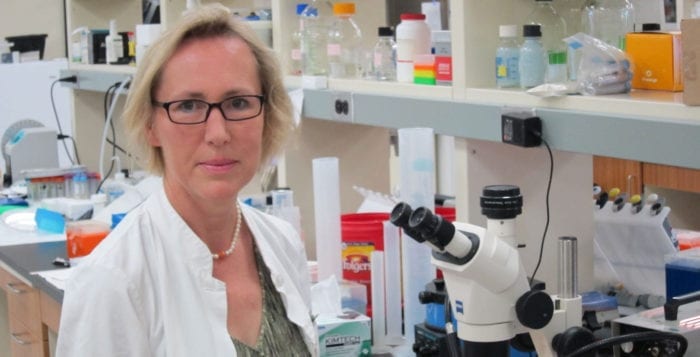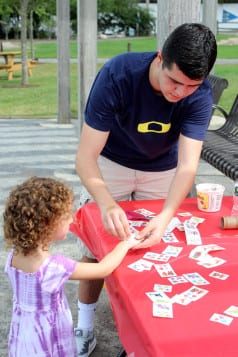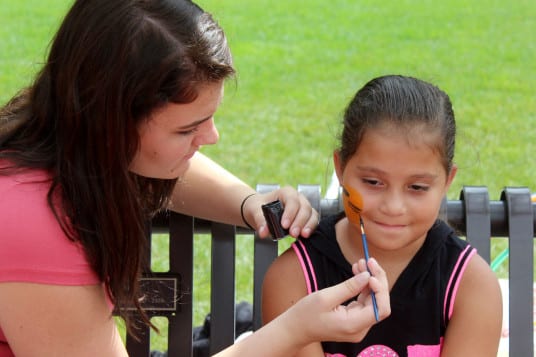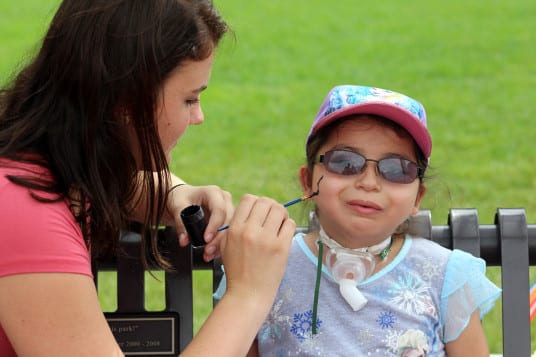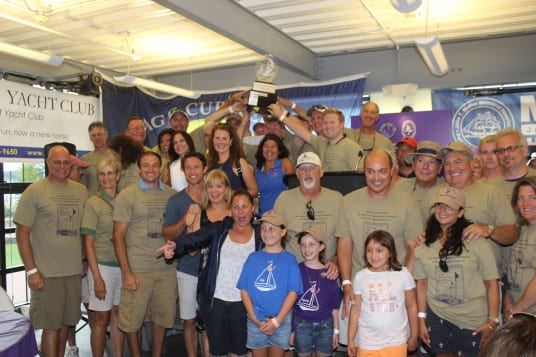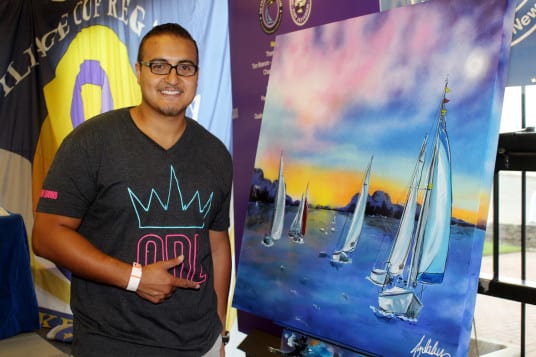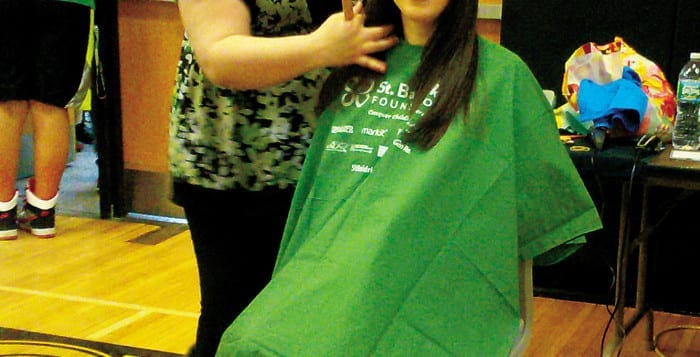By Kyle Barr
On the night before St. Patrick’s Day, hair rained down onto the floor of Centereach Fire Department. People clapped and cheered as blonde, brown and even green-dyed hair fell from amused faces before being swept away during the annual St. Baldrick’s charity event to raise money for childhood cancer research March 16.
Area local Aimee Jackson watched her teenage son Zachary get shaved, the first head of the night to go bald. It was his fourth time participating, and every year the duo has tried to raise more and more money.
“The first time he did it he was little — 5 years old — we both did it,” she said. “He’s shaving in honor of his twin brother, Kendall, who passed away just before their fifth birthday.”
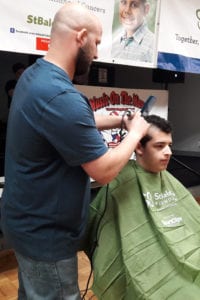
The Middle Country Youth Civic Association and Centereach Fire Department joined with local sponsors to host the fourth annual event. Before the buzzer even started sounding, the team of brave bald-headed
community members raised close to $30,000. By Monday, the event had raised over $47,000, close to twice the original $25,000 goal, according to event organizer Doug Dickson. The largest donor was 12-year-old Austin Vero, who raised over $15,000 alone.
“Thank God for our barbers — with all the hair on the ground, they bring their own guys, they’re sweeping all the time,” Dickson said, laughingly.
The night was full of Irish flavor with the inclusion of FDNY Emerald Society bagpipers and Irish step dancers from Mulvihill-Lynch Studio of Irish Dance in Lake Ronkonkoma. Attendees were decked in green from head to toe, including Rob “Squid” Wilson, who was one of many prospective head-shavers to dye their hair green.
Wilson has been hosting local St. Baldrick’s events for 16 years. This year, he dressed in a bright green shamrock coat and a green tiara.
“My team is the Squid and the Squires,” Wilson said. “Each team is a bunch of clowns like us who are doing it for the right reasons.”
He and his friend Tom Duffy have been involved and shaved their heads every year since their first rodeo.
“It’s important to show kids it’s not a big deal to get their heads shaved,” Duffy said. “My big thing is I feel if [scientists] can cure cancer with kids — they can cure cancer.”

Department shave their heads at the event. Photo by Doug Dickerson
Several staff members at the fire department joined in the shaving spirit, including Assistant Chief Joseph Feola.
“It’s a huge event — one of the bigger events we have,” Feola said. “It’s great to see all this support from the community.”
Nine barbers and hairdressers volunteered their time to shave heads, including the owner of Rockabilly Barbers of Stony Brook’s Vinnie Ferrara. He and his crew of barbers have also been involved in the event for 16 years.
“The greatest thing about it is that we’ve been doing it for so long and seen so much money raised,” Ferrara said. “It just goes to a great cause.”
“The people are so into it,” owner of Centereach-based Blondie’s Creations Inc. Mary Beth Mastando said. She and her team have been shaving heads at the event for three years.
“The community gets together, and everybody helps,” Mastando said. “They’re excited to be shaving their head, and I’m the one doing it, so that’s pretty cool.”
The Centereach St. Baldrick’s organizers are accepting donations until next year’s event. To join in the cause, visit www.stbaldricks.org/events/mypage/10953/2018.


